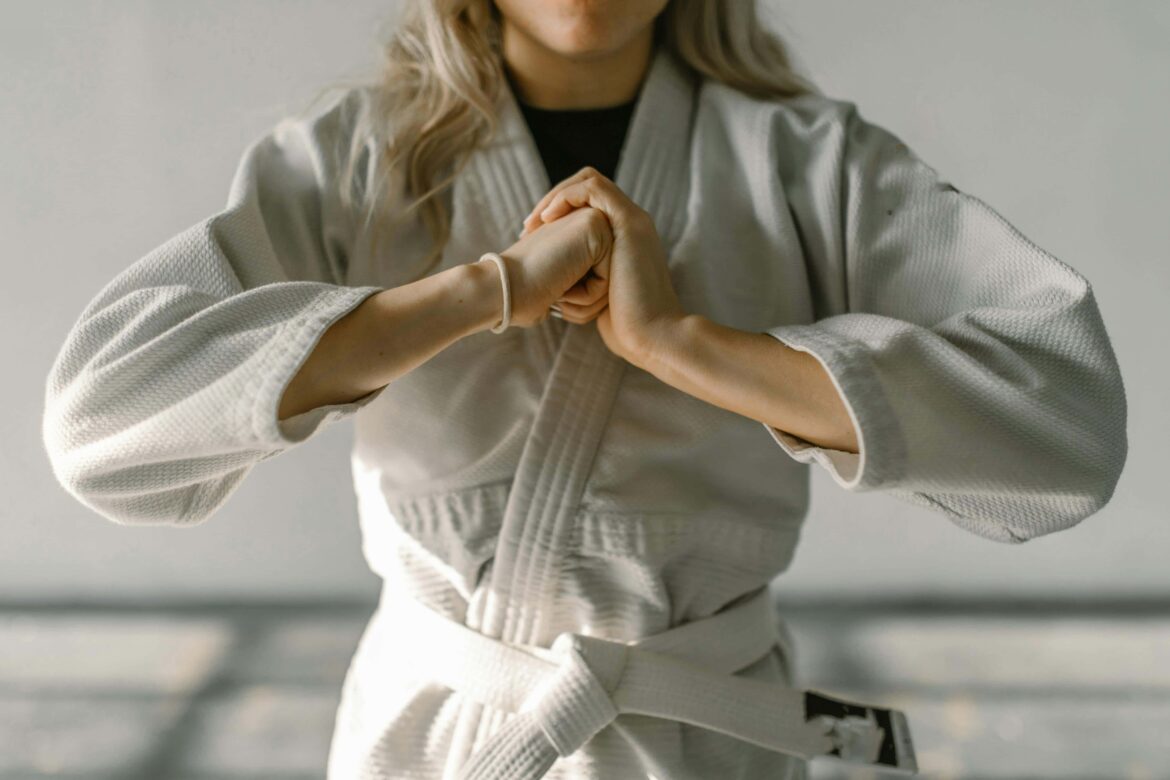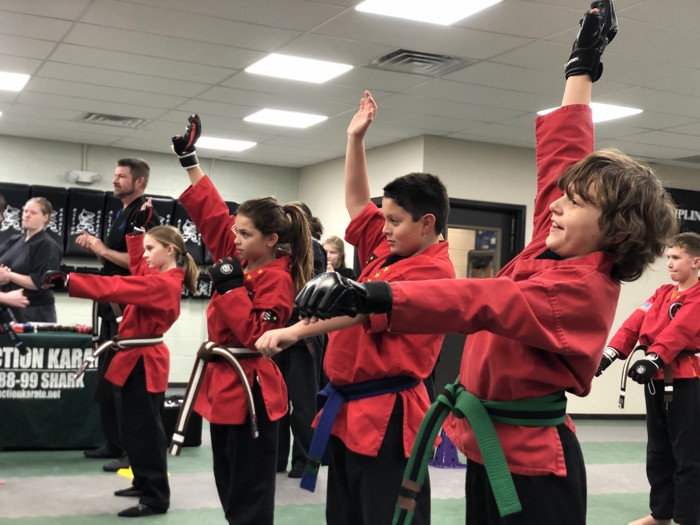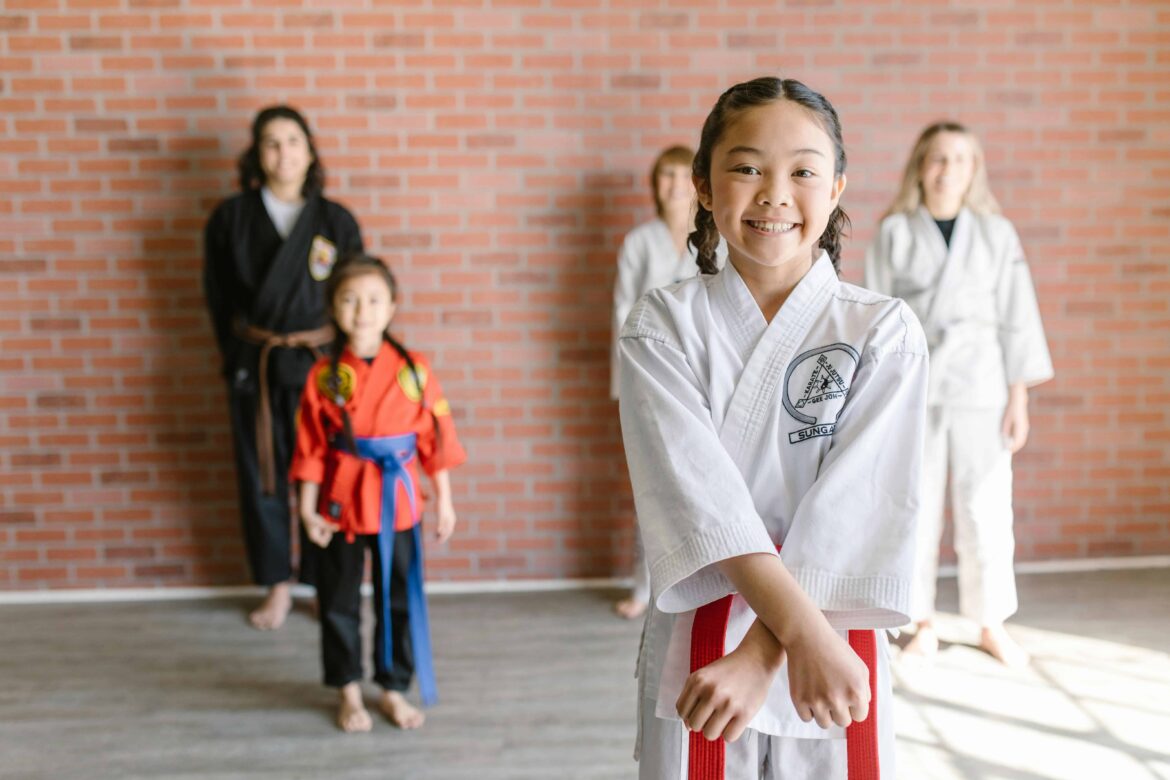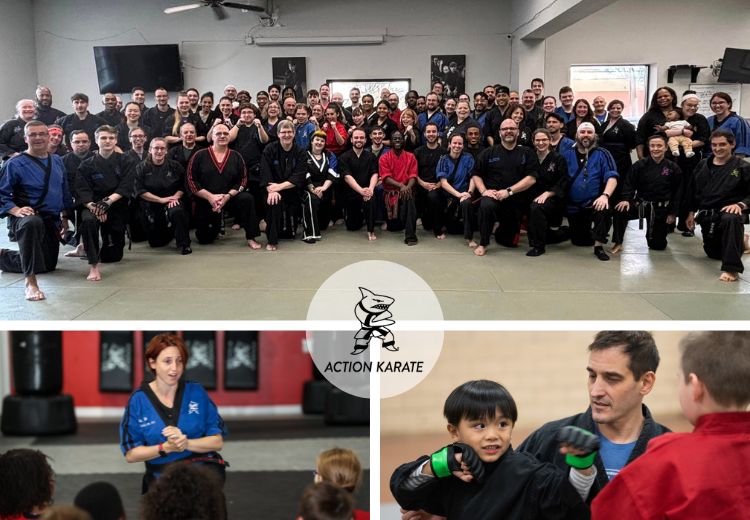Parents who are looking for engaging activities for their child as a way to reduce screen time and stress levels plus improve overall health and fitness are encouraged to consider karate. Martial arts is not just about doing a physical sport.
It’s considered a holistic lifestyle and culture that takes into account both physical, mental health and social/community aspects that help develop a child into a well-rounded, healthy adult.
If you’re still on the fence about why you should enroll your child in karate classes, this post is for you. Below, we set out 10 of the key benefits your child will enjoy as they work their way to health, fitness, and strength step by step. Let’s take a closer look.
What are the benefits of karate classes for kids?
Broadly speaking, karate offers important benefits for children. Starting from a young age (as little as two years old in some cases) comes with incredible advantages.
In particular, there are numerous benefits of karate for kids, among which include that it helps improve your body height, weight, and reflexes.
However, apart from the physical benefits, there are also multiple mental benefits of karate, such as self-discipline, stress relief, and more.
reasons why you should choose karate for kids
Here, we set out 10 of the leading reasons why you should enroll your little one in karate classes for kids.
Physical fitness
Regular physical activity is a must for growing children whose bodies are still developing. Karate is one such important physical activity that teaches balance, coordination, and flexibility. Through physical activities that karate offers, your child will become much fitter, healthier, and stronger, growing into a healthy young adult.
Self-defense
The problem of bullying in schools and other social environments is pervasive. While karate is primarily a form of self-defense, it also teaches children the importance of and gives them the ability to diffuse or avoid tense or troublesome situations, thus staying safe and protected. In turn, this gives them greater control over their reactions and they become more confident in their abilities.
Self-discipline
As a highly structured activity, karate emphasizes respect. This respect is aimed at peers, teachers, parents, siblings, friends, and other members of the community. Action Karate is about following rules and instructions, and this, in turn, provides children with a greater sense of responsibility and builds self-discipline, as opposed to seeking instant gratification.
Continuous learning
If you know a thing or two about karate, you know that even with the rank of black belt, learning is never truly done. Children will be exposed to the benefit of continuous learning as they constantly learn new things, figure out new ways to improve, and strive towards achieving the next karate level. This philosophy of continuous learning carries through in other areas of life and fosters a culture and mindset of working hard, remaining curious, and having the desire to grow and improve.
Friendships, teamwork, and community
The social component of karate cannot be denied either. It brings together like-minded individuals in a safe and welcoming environment where they can thrive. Children learn to make friends and develop healthy social skills. In particular, karate classes encourage teamwork, leadership, and interpersonal skills. They also create a sense of belonging and community where they’re constantly supported and are encouraged to lift and support one another.
Goal setting
Karate is about creating short, medium, and long-term goals. Whether it is working towards the next stripe on their belt or perfecting the art of the perfect kick, through karate, children discover that their effort and dedication help them build the skills, knowledge, and abilities they need for success. Such determination and dedication to the task is also carried through in the classroom environment and beyond.
Reduces stress, anger, and frustration
Wondering what does karate teach you mentally? Well, dealing with stress on a regular basis can have important health consequences. However, karate can help children combat stress from home or the classroom by engaging in cardio activities that fight the effects of stress and anxiety. In addition to this, breathing sessions are also geared towards reducing stress. Meanwhile, karate can also help foster kindness in students and helps let go of pent up anger and frustration.
Strengthened focus
Being able to focus on the task at hand is an important prerequisite for success in children’s academic, personal, and social lives. When a child is able to give their full attention and focus on a task, they are more likely to succeed and overcome mental barriers and sensory distractions. Practicing karate on a regular basis enables children to clear their perceptions and focus without distractions. This is just one of the karate benefits for 5 year olds that improves your mental health.
Improves listening skills
Whether it’s one-on-one work with a karate instructor or group work, listening to the instructor is key for success. That’s because they know the ropes and are there to guide your child to achieve success. Learning to carefully listen and follow verbal instructions makes your child more adept and this translates into immense benefits in life and in the classroom, too.
Stimulates introspection
Because martial arts is about a holistic approach, it encourages both physical and mental mastery. Irrespective of the daily inner struggles your child may go through, karate classes combine the physical and mental elements that teach a wisdom and philosophy that helps children realize when they are making repetitive mistakes and figuring out what went wrong along with searching for the right solutions to the problem.
Social Interaction
Karate enhances physical fitness and fosters social interaction skills in children. Training with peers teaches teamwork, cooperation, and respect, creating camaraderie in a structured environment. The dojo acts as a community where young martial artists share experiences and support each other. These interactions help children develop essential social skills for building friendships and navigating social situations, both in and out of karate. Participation in karate boosts confidence in communication and positive interactions, laying the groundwork for strong social connections in their lives.
Building Confidence
Karate training is a powerful tool for building confidence in children. As they progress through various techniques and belt ranks, they experience a tangible sense of achievement that reinforces their self-worth. This journey of mastery, coupled with the supportive environment of a dojo, encourages kids to believe in their abilities, which translates into other areas of their lives, such as academics and social interactions.
Confidence Levels
Engaging in karate can significantly elevate a child’s confidence levels. The discipline required to learn new skills, coupled with the positive reinforcement from instructors and peers, fosters an environment where children feel secure in taking risks. As they succeed in mastering techniques and overcoming challenges, their overall self-assurance grows, enabling them to face life’s difficulties with greater resilience.
Healthy Body Weight
Practicing karate serves as an effective physical activity that promotes maintaining a healthy body weight. As children engage in regular training, they develop healthy habits associated with movement and exercise, reducing their risk of obesity. The structured environment of karate classes encourages active participation, enabling kids to enjoy fitness while developing skills that contribute to their overall well-being.
Karate lessons offer a unique opportunity for children to develop essential physical skills and enhance their motor skills through structured karate training. As students engage in various techniques and exercises, they not only improve their physical fitness but also cultivate discipline, focus, and perseverance. The comprehensive training provided in karate helps children grow stronger and more coordinated, ultimately leading to improved self-confidence and social skills. Enrolling your child in Action Karate, one of the leading Martial Arts Schools, can significantly contribute to their overall development and well-being, setting them on a path to success both in and out of the dojo.
Valuable Skills for Karate Students
Karate students gain a multitude of valuable skills that extend far beyond physical techniques. As martial arts students progress through their training and, they learn essential life skills such as self-discipline, healthy habits, and conflict resolution. The structured environment of karate fosters respect and compassion among peers, enabling students to build empathy and understand the impact of their actions. These competencies not only enhance their abilities in martial arts but also translate into improved behavior and decision-making in everyday situations, making them more confident and resilient individuals. Through their karate journey, students cultivate a sense of belonging and develop a strong foundation of character that serves them well throughout their lives.
Regular Training in Different Martial Arts Styles
Engaging in a martial arts style such as karate, judo, or taekwondo through a structured karate program can significantly enhance a child’s physical and mental development. Regular training in these disciplines not only improves fitness levels but also instills valuable life skills such as self-discipline, confidence, and respect. Here are some popular martial arts styles to consider:
- Karate
- Judo
- Taekwondo
- Brazilian Jiu-Jitsu
- Muay Thai
Each of these styles offers unique techniques and philosophies that can contribute to a child’s overall growth, making regular participation in a karate program a rewarding experience that fosters lifelong benefits.
Why I should encourage my children to enroll in karate
Kids should choose our martial arts program because it empowers them with essential life skills such as confidence, self-discipline, and teamwork while promoting physical fitness in a fun and engaging environment.
If you are ready to give your child the gift towards better personal and physical development, you’ll definitely want to embed karate in your child’s life. And if your child is not feeling too excited about the prospect yet, there are things parents can do to encourage their child’s participation.
This includes talking to them about the important benefits of karate, showing them how it can help solve some of the challenges they’re facing, and even mentioning how cool it is to master the techniques and art of karate while building lasting friendships.
Unlock your child’s potential and foster their confidence by enrolling them in our program today—experience the transformative benefits of martial arts training!
2 Likes1,787 Views






